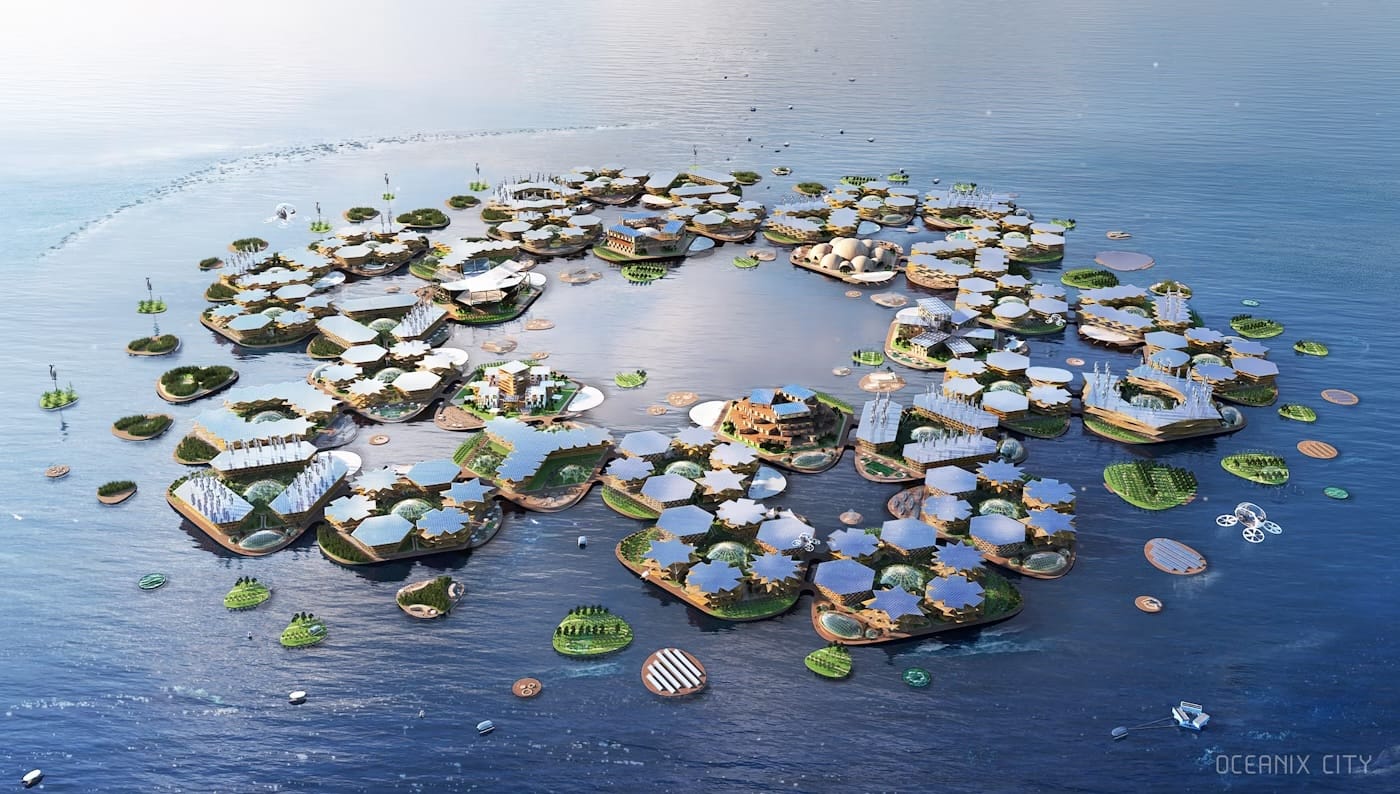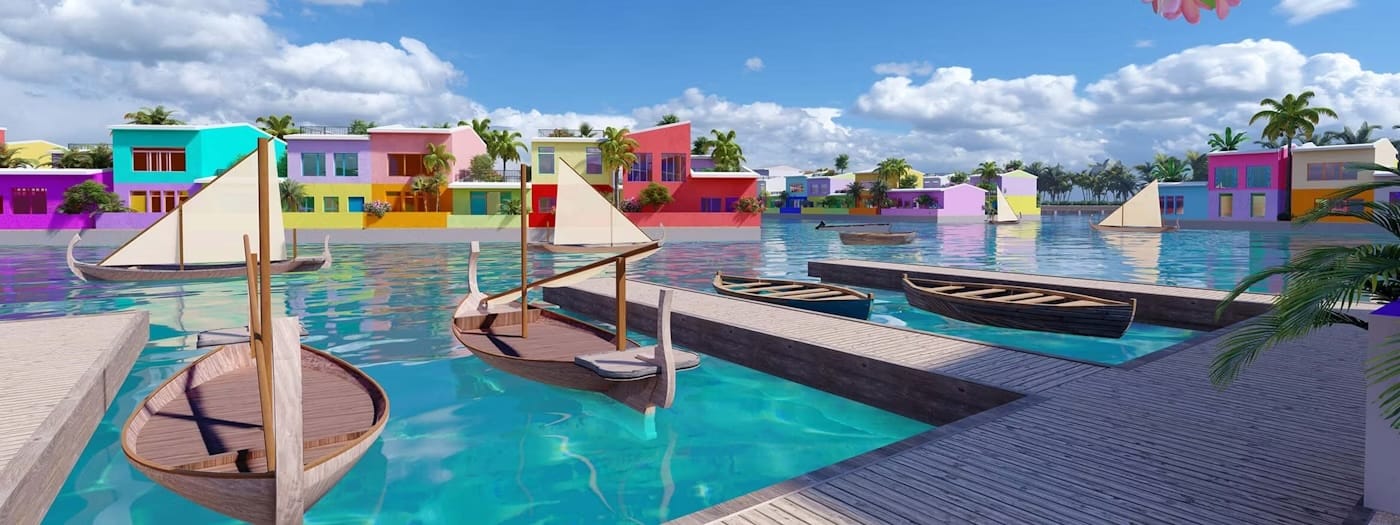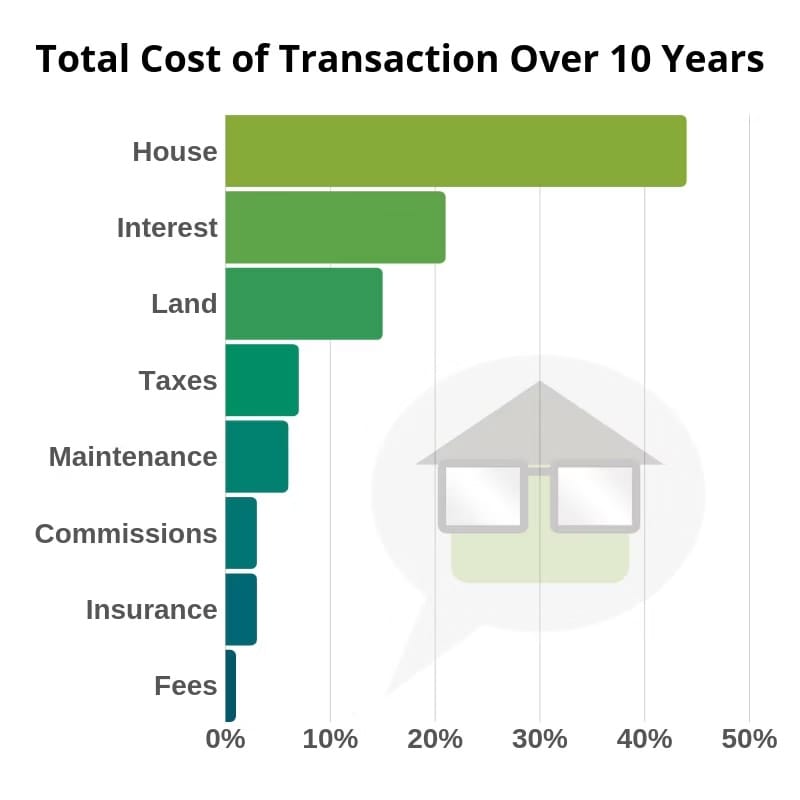The Future Prop-Aquapreneur Paradise (Transmission #180)

Many of you have no doubt seen Waterworld, the classic post-apocalyptic Kevin Costner film in which most of Earth’s land is submerged due to the polar ice caps melting. It was the most expensive movie ever filmed at the time.
I loved the film as a kid, partly due to Kevin Costner being among my favorite actors, but certainly due to the futuristic nature of it: a world I couldn’t even imagine.
Twenty-five years ago, at the age of thirteen, I believed the movie a mere fantasy the real world would never see. However, like it or not, that world is coming. Maybe not tomorrow, or next year, or even three decades from now. But reversing climate change seems far-fetched, to say the least. Change is certain.
According to Climate Central, “Over the course of the twenty-first century, global sea levels are projected to rise between about 2 and 7 feet, and possibly more.” That is estimated to lead to displacement of more than 300 million people by 2050 temporarily and by 2100 permanently.
Climate migration will be real: “Hundreds of millions of people from Central America to Sudan to the Mekong Delta will be forced to choose between flight or death.” However, it’s not just sea levels to worry about, but rising temperatures making previously-populated regions uninhabitable. Extreme hot zones currently make up about 1% of the Earth’s land surface. By 2070, those zones could “cover nearly a fifth of the land, potentially placing one of every three people alive outside the climate niche.”
Many will head for the hills and fight tooth and nail over the little land that’s left. Others, however, will flee to the seas. In the meantime, the transition will be painful. The sad reality is that the poorest of the poor will bear the brunt of the crisis due to lack of financial means.
CONSERVING THE LAND
The Netherlands has been on the forefront of flood control, with two thirds of the country susceptible to flooding. “Natural sand dunes and constructed dikes, dams, and floodgates provide defense against storm surges from the sea,” according to Wikipedia. Water control boards maintain this intricate, complex system that includes rivers as well.
Following Hurricane Katrina, New Orleans was forced to learn quickly from the Netherlands, Venice, and other governments in order to protect its city and surrounding neighborhoods. After spending $14 billion to build a network of levees and floodwalls, the Army Corps of Engineers said “the system will stop providing adequate protection in as little as four years because of rising sea levels and shrinking levees.”
Bottom line, maintaining shorelines is expensive business--and accounting for storms and adverse weather events will only worsen in the future. At some point, the costs will far outpace the government's ability and funds to combat coastal submergence/erosion.
THE SEAWORTHY FUTURE
A world with no (or little) land means houseboats, floating bridges, an array of yachts, floating greenhouses with attached desalination plants, rainwater collection systems on every rooftop, self-driving delivery boats, and even underwater dwellings. Technology underpins all of that.
Solar and wind will power ocean-based civilizations. Perhaps floating cities will be clustered around massive wind towers built in the sea, acting as pilings. Or, the larger structures might be floating vessels supported on large, pontoon-like structures submerged below the sea surface--not unlike offshore oil platforms.
Ellie Cosgrave at the BBC talks about the idea of “build[ing] large raft-like structures that can act as floating foundations for buildings, roads, utilities, and parkland.” That’s a stark improvement over traditional cities that are static and not easily configurable without expensive demolition work--“floating cities could be repeatedly remoulded according to the seasons or population changes.”
Bidding adieu to land will have its own challenges: manufacturing will have to be completed on land and structures will have to withstand the brutal realities of the open seas, but climate change resilience is the baseline need for humans to flourish on Earth. These challenges are surmountable—and, in fact, are already being tackled by some of the most pioneering companies eyeing the largest potential real estate “land” grab in history.
CITIES IN THE WAKE // THE FUTURE IS CLOSE
It may be a mere ten years until we see floating cities visible from the shores of progressive cities, according to Sanjana Shenoy at CurlyTales. “Water-based societies will be developed to balance climate change, poor living conditions, and combat overcrowding. … They will be built of platforms and will then be forged to the ocean floors. The best part is that such cities will be self-sustaining as they have the ability to generate power, grow food using sunlight, wind, and waves. They can also recycle waste. When it comes to water, it can be procured using vapour distillation technologies and rainwater generation.”
That follows architect Vincent Callebaut’s 2008 “Lilypad” concept, a “floating ecopolis for ecological refugees.”
Since then, Oceanix has developed a vision for Oceanix City, a resilient and sustainable floating community for 10,000 residents on 75 hectares. It consists of a cluster of six neighborhoods of 12 hectares, each accommodating roughly 1,650 residents.

In the Arabian Sea, construction is set to “break water” next year on the Maldives Floating City, which will be “in a lagoon in a sequence of hexagonal labyrinth rows, meant to resemble coral. Each house will be about 1,000 square feet and cost $250,000.”

This futuristic water city will also have all the usual amenities: stores, public spaces, and schools. And in a nod to the earlier complexities mentioned, “the network of floating buildings will be connected to a ring of islands that act as a breaker wall—protecting the city from ocean swells.”
WATER ESTATES
When this future reality plays out, how will real estate work? How will agents earn a living?
We’re not without precedent of course. Floating homes (found in condo or co-op owned slips) and Floating on-Water Residences (aka “houseboats” found in rental slips) are already bought and sold. Floating home sales almost always entail also buying a slip, which is “one of the major reasons floating homes cost more than houseboats,” according to Danny Varona. Slips replace land, but legally speaking, not much else would change commission-wise. On the title side, I imagine there will be no shortage of aquapreneurs bringing blockchain solutions to market to distribute new slips and track ownership stakes. And, for discovery, a marketplace for water rights and slips is a mid- to long-term opportunity worth pursuing.
Yachting divisions within brokerages will rise to an industry swell or, more likely, tsunami. And brokers such as Paul Benson—the owner of 27 Engel & Völkers brokerages across Utah, California, and Nevada who ventured into yachting—will be thought of as visionaries. At a minimum, standing up climate migration landing pages now will provide SEO juice when those become popular search terms.
Given the inevitability of water estates, brokerages, agents, and proptech founders specializing in guiding this transition may eventually be the only ones who find themselves above water.
PS: While land is not the most expensive part of housing, it’s number three. Would removing land from the equation actually solve our housing affordability woes? I tell you what, it’s certainly far more likely than the continual fight to compress commissions by a half or full percentage point.

